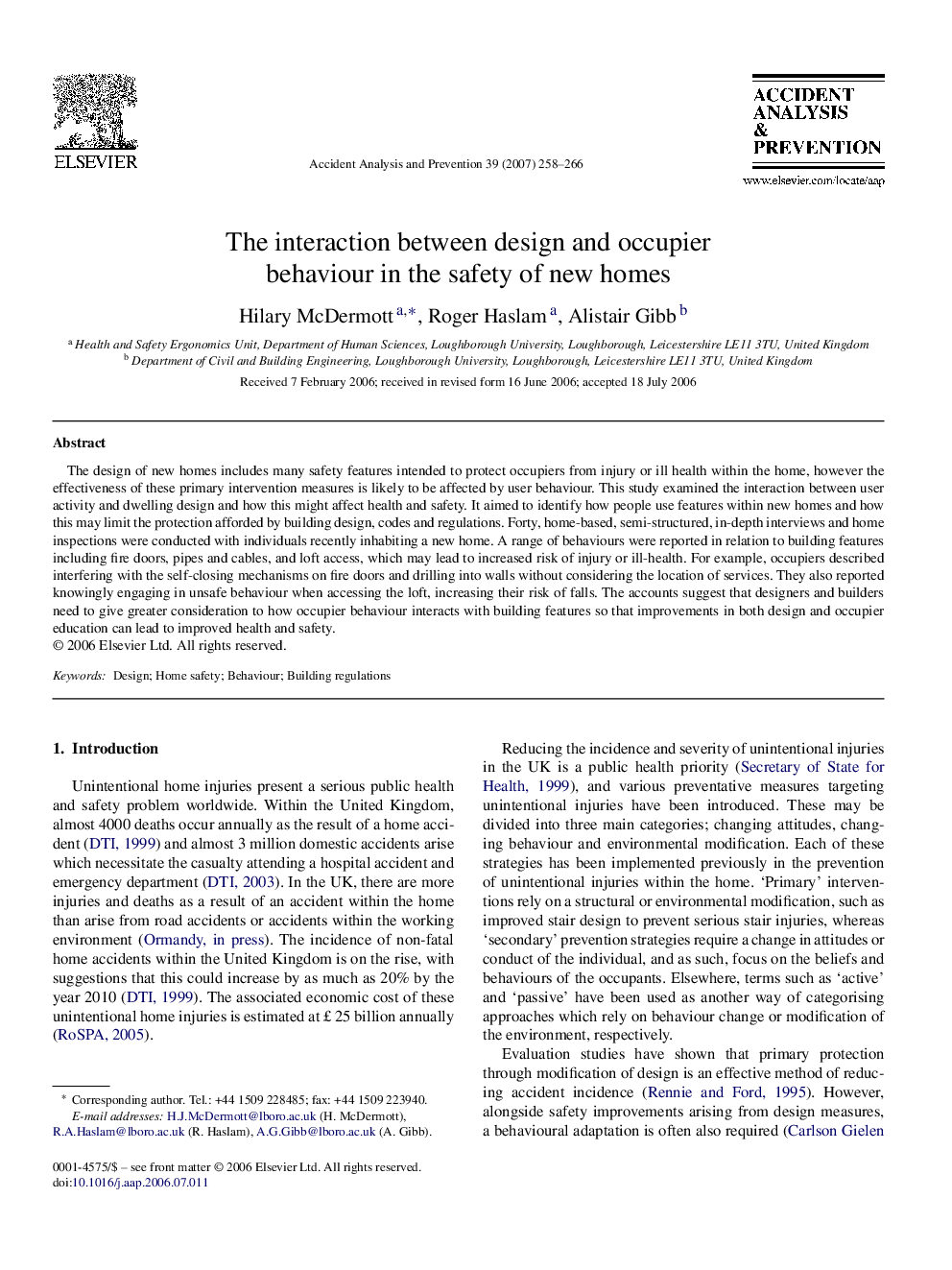| Article ID | Journal | Published Year | Pages | File Type |
|---|---|---|---|---|
| 573902 | Accident Analysis & Prevention | 2007 | 9 Pages |
The design of new homes includes many safety features intended to protect occupiers from injury or ill health within the home, however the effectiveness of these primary intervention measures is likely to be affected by user behaviour. This study examined the interaction between user activity and dwelling design and how this might affect health and safety. It aimed to identify how people use features within new homes and how this may limit the protection afforded by building design, codes and regulations. Forty, home-based, semi-structured, in-depth interviews and home inspections were conducted with individuals recently inhabiting a new home. A range of behaviours were reported in relation to building features including fire doors, pipes and cables, and loft access, which may lead to increased risk of injury or ill-health. For example, occupiers described interfering with the self-closing mechanisms on fire doors and drilling into walls without considering the location of services. They also reported knowingly engaging in unsafe behaviour when accessing the loft, increasing their risk of falls. The accounts suggest that designers and builders need to give greater consideration to how occupier behaviour interacts with building features so that improvements in both design and occupier education can lead to improved health and safety.
